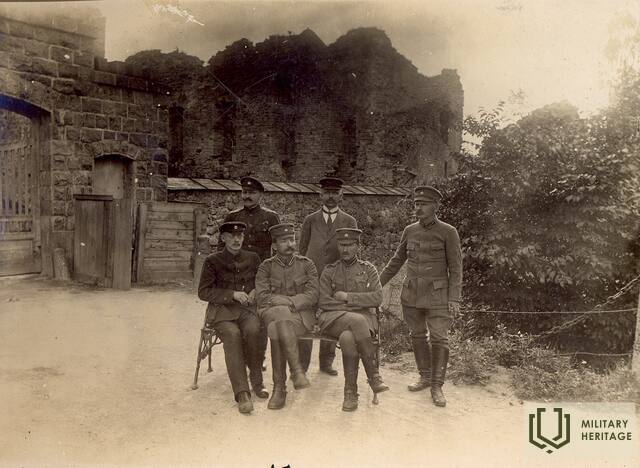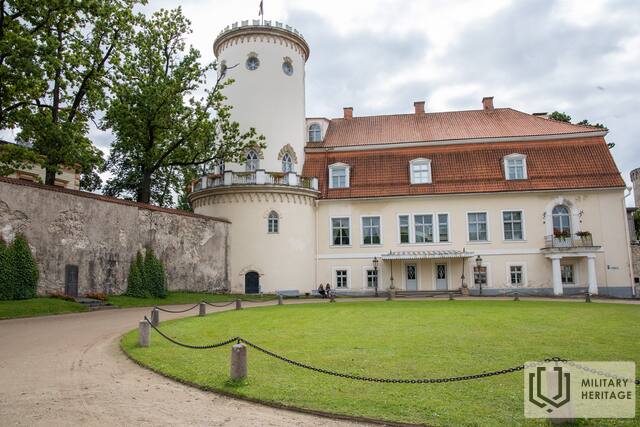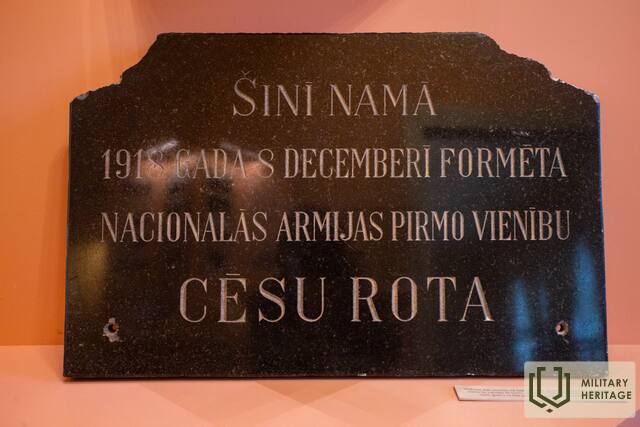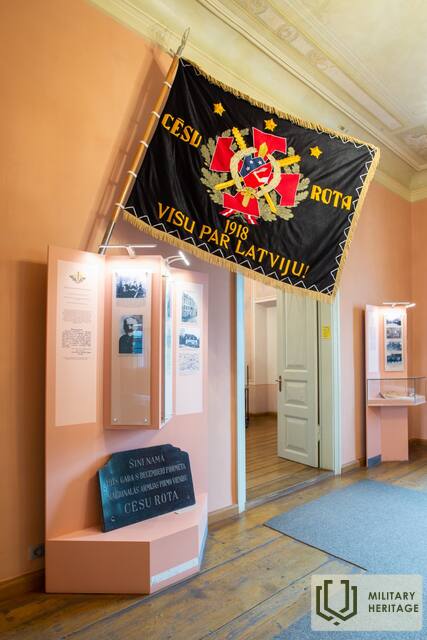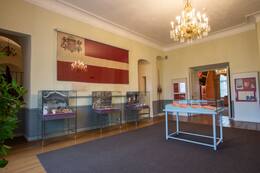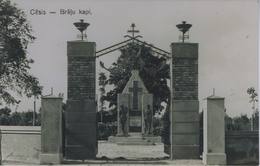Cėsių Naujoji pilis – sienos, kurios sukūrė Latvijos valstybės saugumą ir iki šiol saugo asmens dokumentus
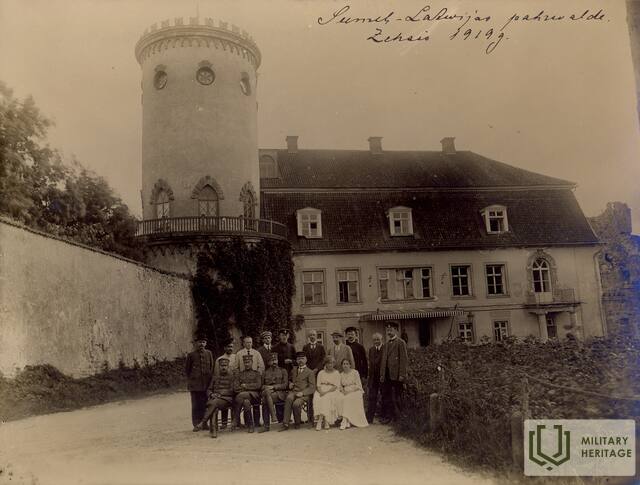
Cėsių Naujoji pilis buvo pastatyta ant karinio įtvirtinimo – viduramžių pilies – griuvėsių. Tačiau tai ne vienintelė šio pastato karinė reikšmė.
Gražioji grafų Sieversų rezidencija ne tik užtikrino jos savininkų ir statytojų saugumą ir gerovę, bet ir buvo pirmųjų Latvijos ginkluotųjų pajėgų junginių gimimo liudininkė. 1918 m. gruodžio 8 d. čia buvo suformuota Cėsių kuopa, dalyvavusi pirmuosiuose Latvijos išsivadavimo karo mūšiuose. Tai ankstyviausi mūšiai, už kuriuos keliems dalyviams buvo įteikti Lačplėšio karo ordinai. Vėliau kuopa buvo įtraukta į vadinamąjį Kalpako batalioną, kuris 1919 m. kovojo už Latvijos išvadavimą Kurše.
1919 m. Cėsių Naujoji pilis tapo prieglobsčiu Latvijos laikinajai vyriausybei, vadovaujamai Kārlio Ulmanio – pilyje buvo įsikūrusi tik Šiaurės Latvijos civilinė administracija. Tuo metu Cėsių miestas trims dienoms įgijo sostinės statusą.
Nuo 1949 m. Cėsių Naujosios pilies sienos yra saugus prieglobstis istoriniams artefaktams, kuriuos surinko Cėsių istorijos ir meno muziejus. Studentų asociacijos „Līdums“ dėka Cėsių muziejus nuo 1933 m. yra svarbus Latvijos vėliavos istorijos saugotojas. Muziejaus darbuotojai ne tik kruopščiai išsaugojo šiuos vertingus mūsų šaliai liudijimus, bet ir drąsiai juos apsaugojo nuo sunaikinimo sovietinės okupacijos metais: netrukus po Antrojo pasaulinio karo pabaigos Cėsių muziejaus mokslinė bendradarbė Erna Berkholce dalyvavo išimant vėliavos istorijos medžiagą iš muziejaus kolekcijos. Ji parsivežė namo sunaikinti skirtas medžiagas ir jas išsaugojo. 1997 m. ji jas grąžino muziejui.
Atkūrus Latvijos nepriklausomybę, muziejaus darbuotojai nenuilstamai dirbo tyrinėdami ir populiarindami vėliavos istoriją. 2000 m. muziejaus istorikas dr. hist. Tālis Pumpuriņas išleido išsamią knygą pavadinimu „Raudona, balta ir raudona – Latvijos vėliavos spalvos. Tyrimai, prisiminimai, dokumentai apie Latvijos nacionalinės vėliavos istoriją“. Nuo 2012 m. muziejaus ekspozicijoje vėliavos istorijai skirta speciali patalpa – Vėliavos salė, kurioje galima apžiūrėti ir pirmąją Janio Lapinio sukurtą Latvijos nacionalinę vėliavą. 2016-ieji jiems ypatingi, nes sukanka 100 metų nuo vėliavos sukūrimo.
Cėsių istorijos ir meno muziejus, 2016 11 09
Susijusios temos
Susijusios vietos
Cėsių istorijos ir meno muziejus Cėsių Naujojoje pilyje
Cėsių istorijos ir meno muziejus yra įsikūręs pačiame Cėsių senamiesčio centre, Naujojoje pilyje. Muziejuje veikia nuolatinė istorijos ir interjero ekspozicija „Cėsys – Latvijos istorijos simbolis“, kurią sudaro du teminiai skyriai: ekspozicija „Raudona-balta-raudona vėliava Cėsių ir Latvijos istorijoje“ aiškina Latvijos nacionalinės vėliavos istoriją nuo XIII iki XX a., patvirtintą nacionalinį simbolį, Latvijos šaulių batalionų vėliavas ir nacionalinių spalvų naudojimo tradicijas Latvijos nepriklausomybės karo metu. Parodoje „Cėsys ir Latvijos nepriklausomybės karas“ daugiausia dėmesio skiriama Cėsių kuopos įkūrimui 1918 m. gruodžio mėn., bendroms estų ir latvių kovos pastangoms 1919 m. Cėsių mūšiuose, laikui, kai Bermonto aferos metu Cėsys trumpą laiką buvo laikinoji Latvijos sostinė, taip pat Cėsių pergalės paminklo istorijai. Pabėgimo kambaryje „Cėsių mūšių legendos“ dalyviai turi valandą rasti išeitį spręsdami galvosūkius, užmegzdami ryšius ir ieškodami paslėptų daiktų. Cėsių kuopa, vienas pirmųjų Latvijos ginkluotųjų pajėgų dalinių, buvo įkurta 1918 m. gruodžio 8 d. Cėsių pilyje vyresniojo leitenanto Artūrs Jansons. Muziejaus ekspozicijoje eksponuojama Cėsių kuopai skirta atminimo lenta, atidengta 1933 m. gruodžio 8 d. Cėsių Naujojoje pilyje, kuri tuo metu buvo 8-ojo Daugpilio pėstininkų pulko ir garnizono karininkų klubo štabas.
Cėsių brolių kapinės
Įsikūręs Cėsių Žemutinėse kapinėse, Lenču g. 15, Cėsis.
Viena reikšmingiausių Pirmojo pasaulinio karo ir Nepriklausomybės kovų memorialinių vietų Cėsyje yra Brolių kapinės Lejos Kapuose.
Kapinėse yra Cėsių menininko ir tarybos nario Augusto Jullos (1872–1958) suprojektuotas, 1927 m. atidengtas Brolių kapinių paminklas, skirtas 1915–1920 m. Brolių kapinėse palaidotiems kariams.
Cėsių Lėjos kapinių Brolių kapuose palaidota apie 200 kareivių. Tarp jų yra nežinomas skaičius Latvijos šaulių ir rusų kareivių, žuvusių Pirmajame pasauliniame kare, taip pat vokiečių (10), lenkų ir kitų tautybių kareivių. Latvijos išsivadavimo kovų metu šiose kapinėse palaidoti 22 5-ojo (2-ojo) Cėsių pėstininkų pulko kareiviai, taip pat 11 laisvės kovotojų, žuvusių kituose Latvijos armijos daliniuose. Brolių kapuose taip pat ilsisi 2 estai, 15 bolševikų aukų ir Latvijos raudonieji šauliai.
J. Lapinio, pirmosios Latvijos vėliavos autoriaus, atminimo vieta
Įsikūręs „Lejas Pintuliai“, Veselavos valsčiuje, Priekulių savivaldybėje.
Matomas paminklas Latvijos vėliavos autoriui Jāniui Lapiniui.
Latvijos nacionalinė vėliava buvo sukurta Pirmojo pasaulinio karo metu. 1915 m., kuriant Latvijos šaulių batalionų vėliavas, pavieniai menininkai siūlė raudonas, baltas ir raudonas vėliavų spalvas. Po pedagogo ir žurnalisto Janio Lapinio sumanymo raudonai baltai raudoną vėliavą 1916 m. antroje pusėje pagamino jo mokinė Marianna Straumane, Valmieros pabėgėlių prieglaudos mokytoja.
Tai pirmoji žinoma ir iš tikrųjų pagaminta Latvijos nacionalinė vėliava, išlikusi iki šių dienų.
2014 m. Priekulių rajono Veselavos valsčiaus „Lejas Pintuļi“ buvo atidaryta atminimo vieta prieš vėliavą autoriui Jāniui Lapinui.
Pirmoji žinoma autentiška Latvijos nacionalinė vėliava, kuri buvo slapta įvežta į Rusiją ir kruopščiai paslėpta sovietų ir vokiečių okupacijų metu, šiuo metu saugoma Cėsių istorijos ir meno muziejuje . Ją 1997 m. padovanojo jų dukra Lija Poga.




